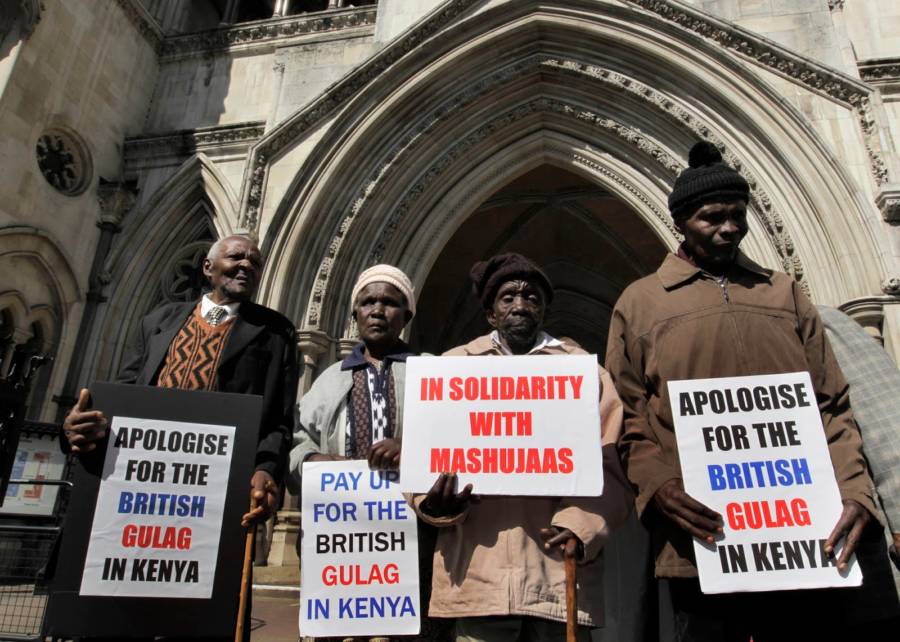Independence and Inaction

Wikimedia CommonsElderly survivors gather at the Crown Court in London in 2011 to press for reparations.
All of this transpired against a backdrop of increasingly extreme propaganda in Britain and America. The BBC and Times of London breathlessly reported the names of every white civilian killed by marauding Mau Mau (all 32 of them), and hailed the dead police (about 200) as fallen heroes.
They barely uttered a word about the approximately 11,000 Kikuyu who were outright murdered in the eight years of the conflict, much less of the 150,000 who died in the camps.
This may have backfired, because in 1959 the recently reelected Tory government in London decided to virtually sever ties with its Kenyan dependency, effectively a grant of independence. The rebellion ended by 1960, full independence granted by 1963, and the initially white-dominated government gave way to a black government that reflected the massive disparity in population between the two groups.
In 1999, a group of survivors formed a trust and sought £5 billion in compensation for victims of the genocide. Nothing came of this, but in 2002 another group presented 6,000 sworn affidavits attesting to British crimes and demanding compensation.
In response, the British government denied responsibility and put the blame on the current Kenyan government, citing as legal precedents a treaty dispute over Patagonian toothfish and something about martial law in Jamaica in 1860.
Ten years later, in 2012, a British court ruled that the dwindling number of claimants had the right to sue the government. David Cameron’s cabinet appealed this decision, more or less on the grounds that the Mau Mau were terrorists.
After courts rejected that line of legal legerdemain, the Conservative government put a freeze on further court proceedings while the Foreign Office “negotiated” individual settlements. The idea seems to be to run out the clock until the last victims are dead, which is actually a promising strategy, since none of them is currently under 80.
And as of early 2017, exactly £0 has been paid in reparations.
For more on European plunder of Africa, be sure to read about King Leopold II’s bloody ventures in the Congo and the Herero genocide, Germany’s first mass murder, decades before the Holocaust. Then, discover the tragedy of the Armenian genocide.





